Yesterday I visited Kirkstall Abbey in Leeds.
It was a popcorn day, colours bursting proudly from their Earthly palette to become unapologetic sweet shop Skittles. Greens were vivid lime, every red garment a jolly berry. Topaz rays cavorted before a marbled backdrop of cornflower and cotton.
Perfect for a leisurely potter.
I once lived just a ten minute walk away from Kirkstall Abbey, yet never visited. I remember at the time people saying;
“The abbey is just up the road, have you been? You should go!”
But as a young student, first time living away from home, ruins just weren’t on my radar.
Over the years, however, I have come to have greater regard for their significance.
There’s something about getting older that makes us appreciate an ageing building in a different way. Whilst in youth we may marvel at the feat of its construction or the history it represents, as we age we identify with its vulnerability. We are the building, gradually eroding and in disrepair. Cracking and crumbling yet somehow, still around. Our hope that the structure continues to exist, is in part, a prayer to ourselves to hang on that little bit longer. Hold our ground. Seeing the illustration of the building in its magnificent hey day is a reminder of our own. We consider the legacy of the site and relate. Are we leaving anything behind? How long will it last? Will it hold any significance whatsoever to anyone?
Are we worth saving?
I read a few of the plaques but find it more satisfying to amuse myself with my own ideas of what went on in the walls.
I close my eyes and touch the cool, pitted surfaces, feeling connection to the lionheart of England, my heritage. I commune with my ancestors as I do, picturing the monks who lived there, the guests that stayed. I imagine the robes and chants, the nature of their conversations, the plain food they ate.
The structure feels in many ways like a charcoaled carcass. Families picnic in the shade of its shell. There is a stumpy bit adjacent to the main ruin which has become a make shift playground for children. Prissy ‘keep off’ signs are ignored, the kids preferring to take notice of the plaque that tells us it was once the adjoining guest house. Obligingly, they make themselves at home, welcomed by their forefathers, scrambling and balancing on the plentiful smoothed blocks. I contemplate the games they play and decide these smaller stones are rotting molars in a disgruntled giant’s mouth and they the explorative dentists.
One of the things I always enjoy about old buildings is how they attract members of the corvid family. They perch and observe as wise black widows.
Ravens so often feel like silent storytellers, foreboding and mystical. Have you ever had one follow you, popping up in several scenes of your journey? A knowing eye greets me as a rolling ebony bead and I’m left wondering what his message is. Elsewhere in the grounds, kestrels cruise the heights and tired pigeons huddle.
I am always drawn to the absent window panes on old buildings, too. The fresh frame they lend via the contrast of rounded grey. It’s like climbing inside a elephant body and seeing the world through its clayed eye. How zesty and enlivened it appears.
As I leave, inhaling the subtle scent of nearby cow parsley, I notice a spent dandelion spray sitting on a ledge, jubilant candelabra.
The way growth continues to push on through inhospitable stone serves as metaphor for all we are still able to accomplish. New life nestles in the nooks of the anchors of past. Peaceful persistence works.
Even the most impenetrable mineral yields for the right flower at the right time.
PS: I hope you have enjoyed these insights and pictures. You can find more of my musings under the heading ‘musings’ on my home page. Should you wish, you can ‘buy me a coffee’ option as a one of token of appreciation or take a paid subscription. Or leave a thoughtful comment or share. I am grateful for you being here.

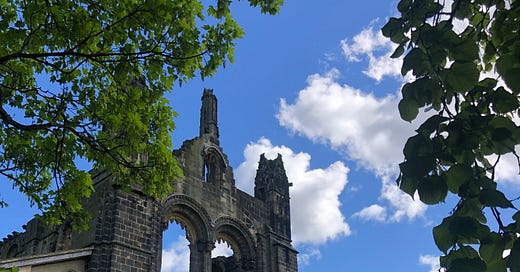



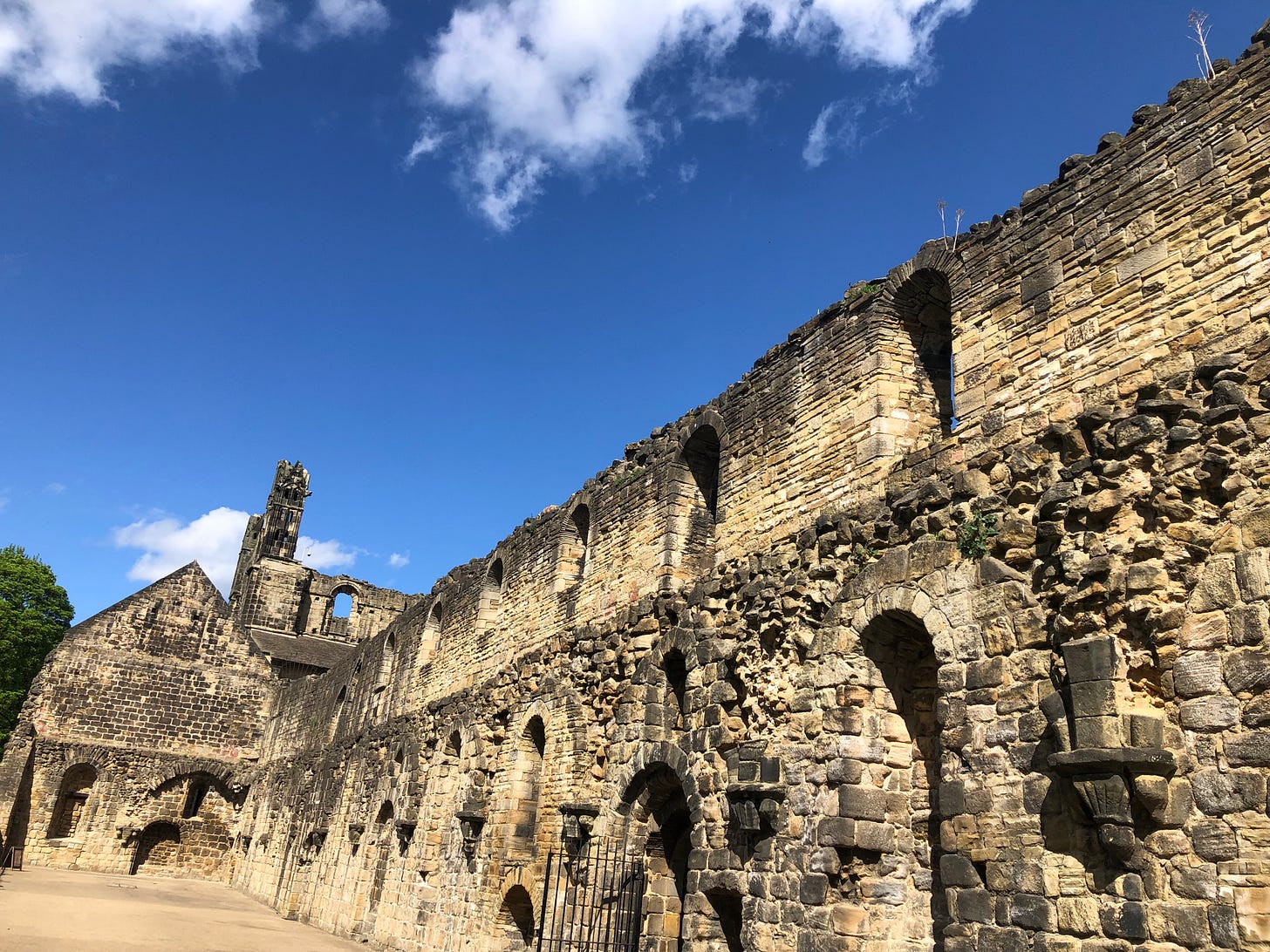

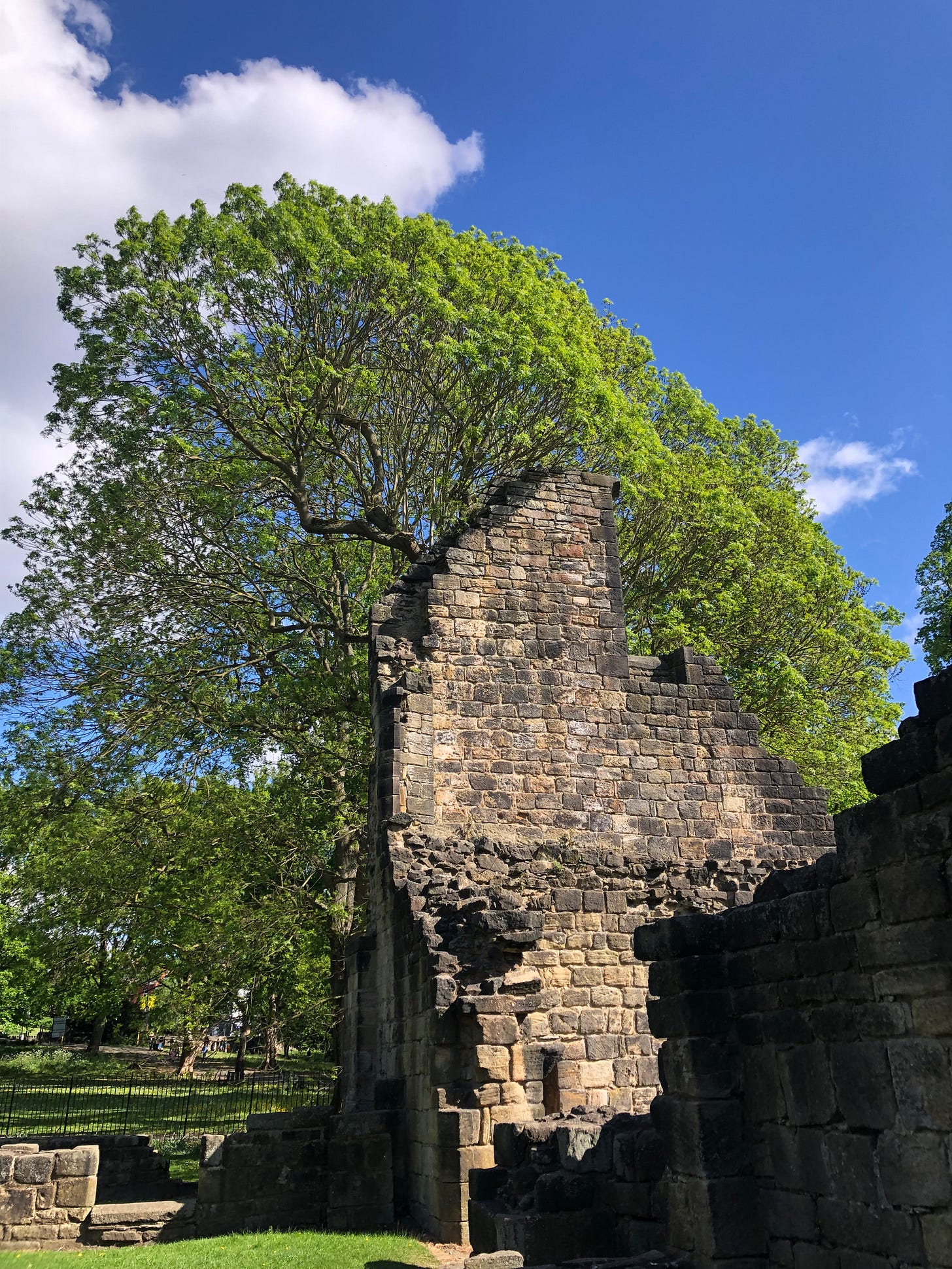


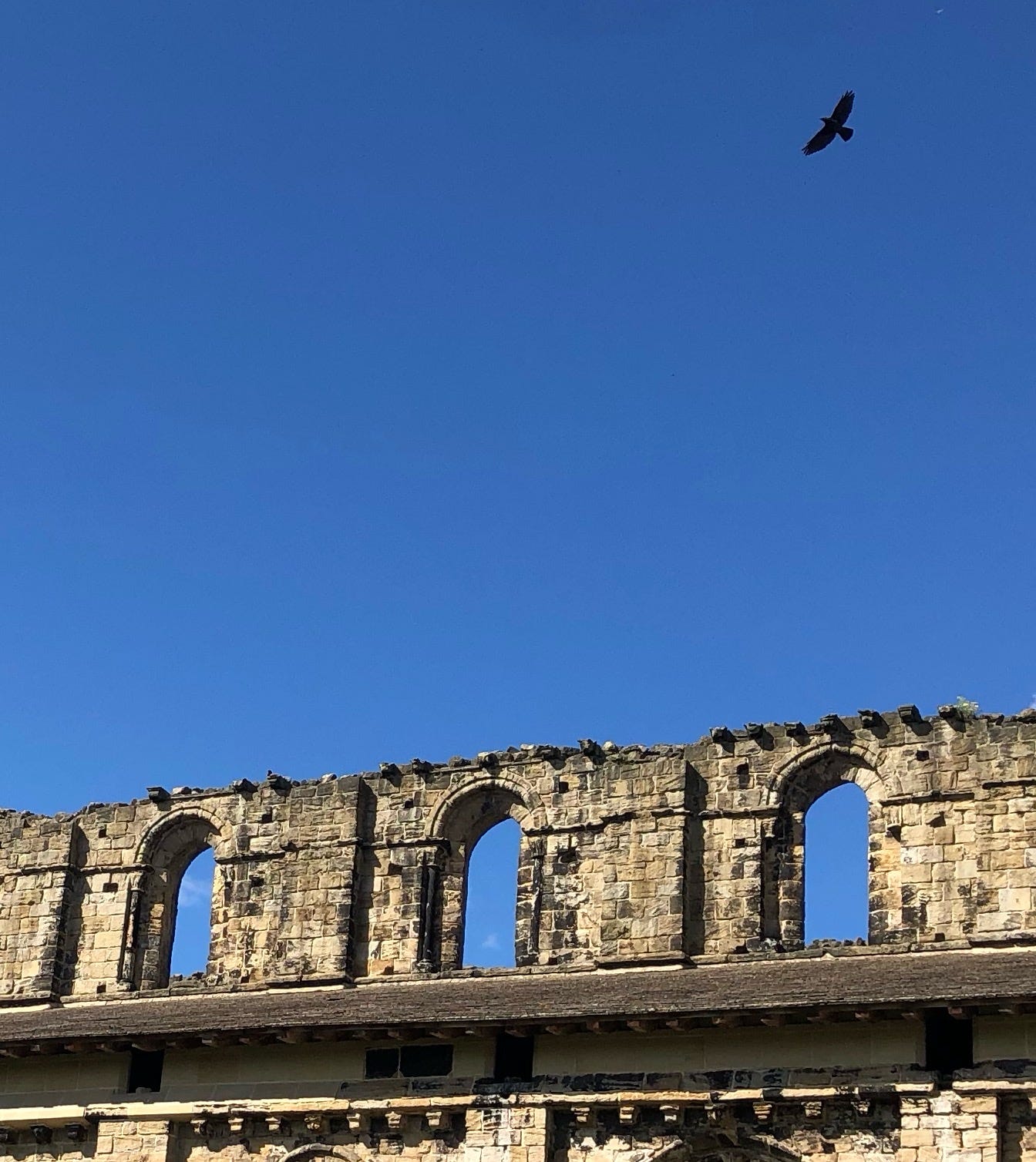
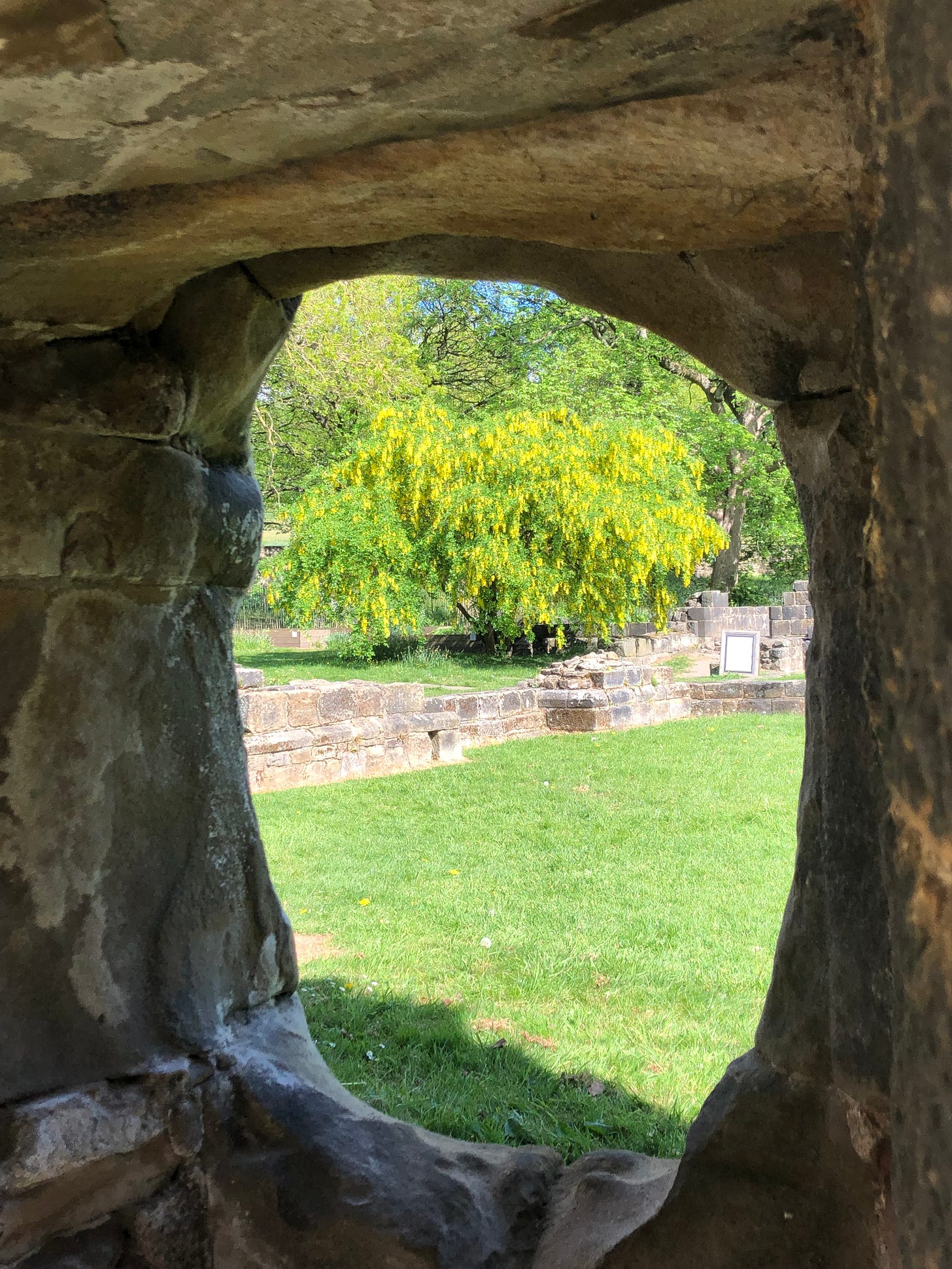

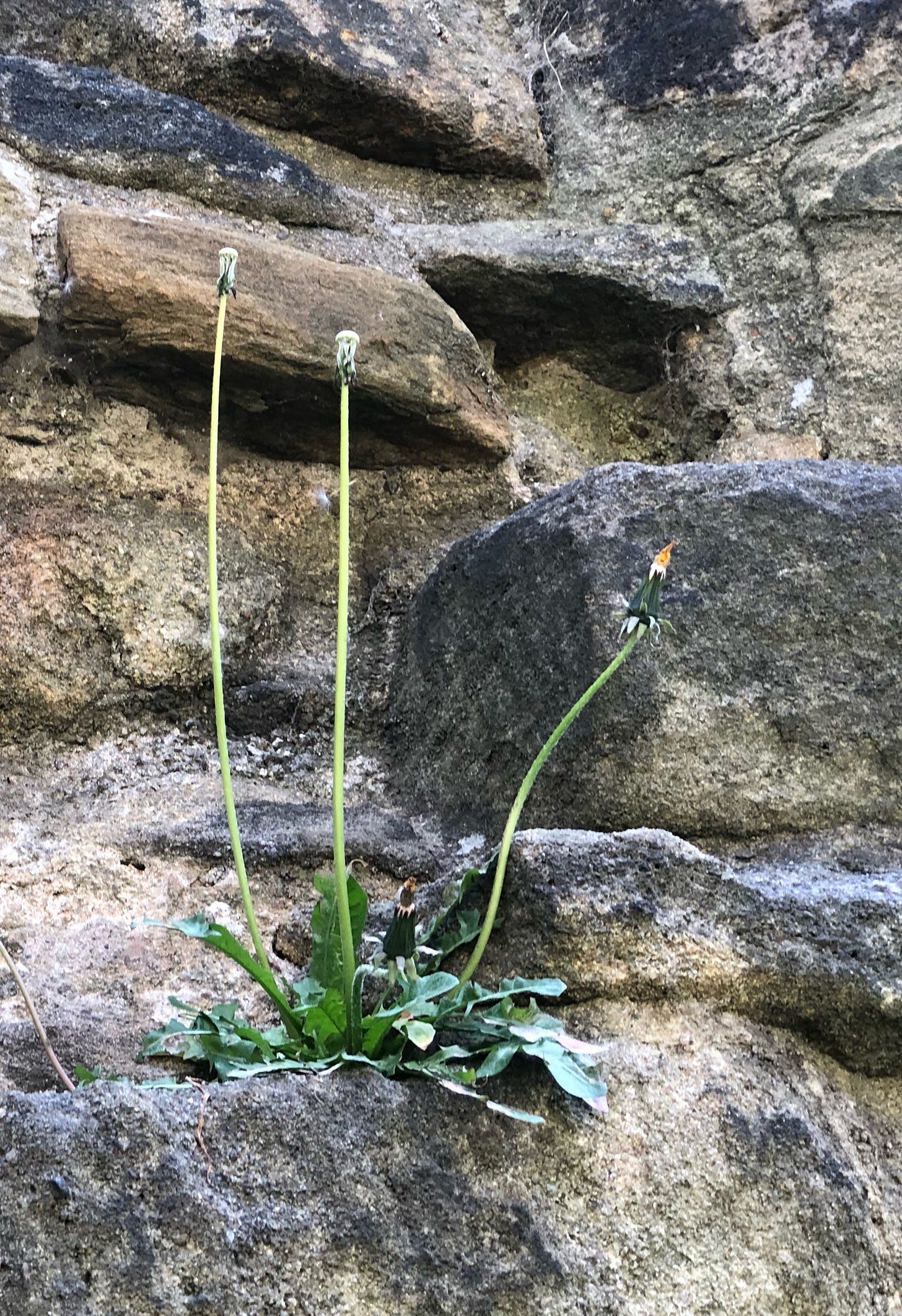

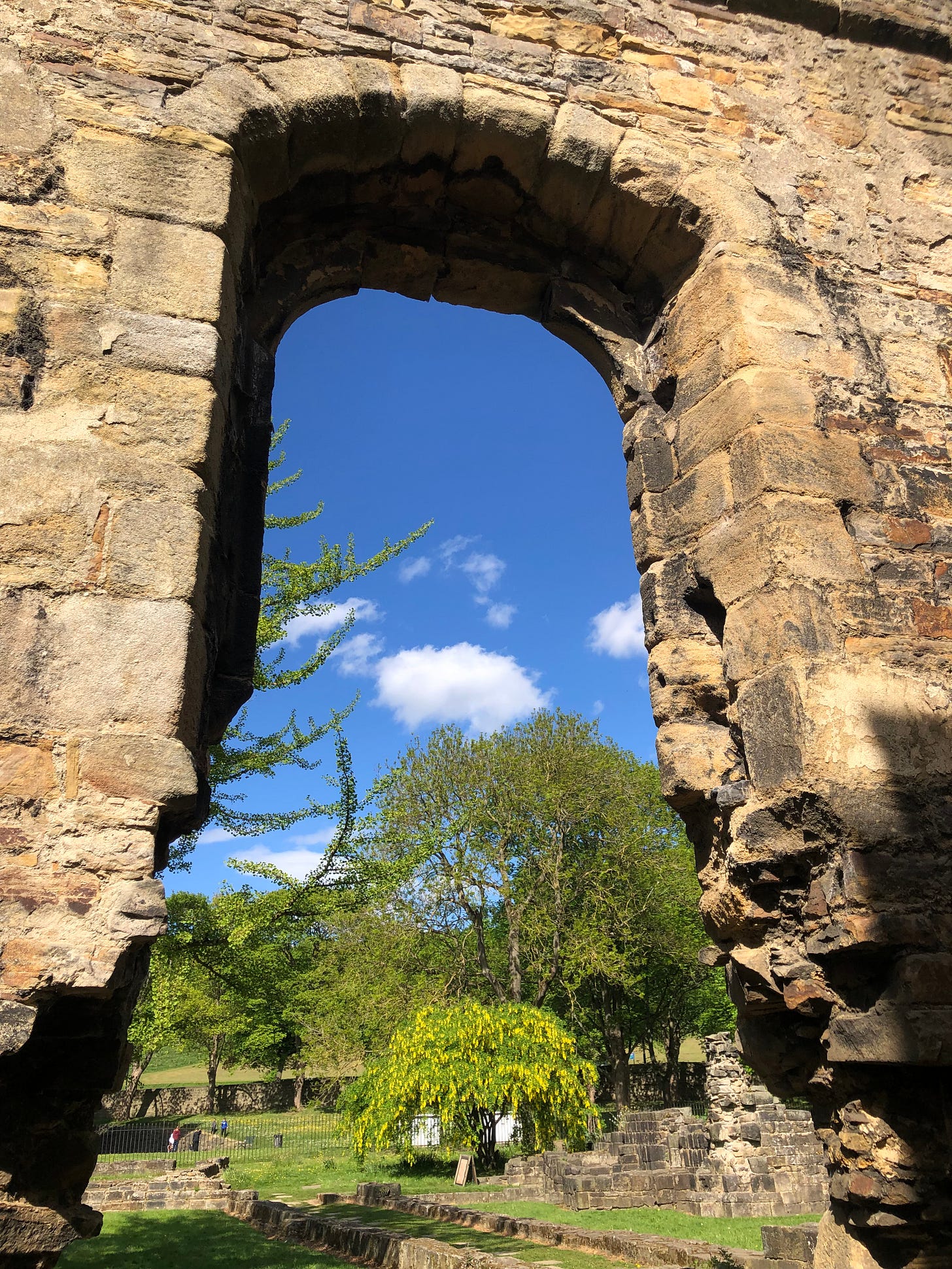
I wish I would age that graceful.
I love how you make a slight comparison with the abbey and our ageing bodies. Truly, these photos were filled with so much history. I’m not sure I’ve heard of the bird which you spoke of but Julie, this was such a lovely tour and read. Thank you